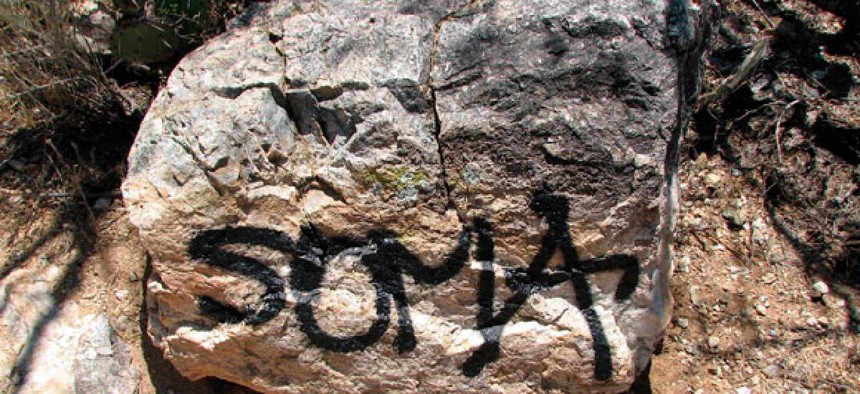Should We Blame Social Media for Graffiti in National Parks?

Significant graffiti damage is seen along the Douglas Springs Trail in Saguaro National Park near Tucson, Arizona. National Park Service/AP
Many park personnel believe the Internet encourages vandals.
It's always disturbing to see vandalism in our national parks, but it's not so clear, as this New York Times story suggests, that social media is exacerbating the problem. The report quotes park personnel who blame the Internet for encouraging vandals. "With social media people take pictures of what they’ve done or what they’ve seen. It’s much more instantaneous," said Lorna Lange, the spokeswoman for Joshua Tree — where vandalism has "escalated this year into wholesale vandalism of archaeological sites and remote vistas," including that oatmeal cookie drawing pictured at right. That mimics an official statement by the park given to CNN in April. "While this started as a few markings, social media posts appear to have sparked numerous individuals' interest in adding to the vandalism of this scenic canyon." But, reading through the various media reports on this horrible assault on nature, it's unclear how much we can really blame Instagram and Facebook.
Minus the on-the-record remarks from park officials there's not much evidence to support the claims that the Internet did this. The Times article mentions a vandal putting her vacation pictures on Facebook — but in the context of the police using it to find the violators. That is the only reference to a specific someone posting their dirty doings online. The Los Angeles Times found a "graffiti expert," former San Bernardino police investigator Dwight Waldo, who pushed the Facebook theory. "It's all about the fame. They want worldwide attention," he said. "A lot of these things are posted on Facebook and stuff. These guys have their own pages." (An Internet search for said Facebook pages comes up empty.)
NEXT STORY: More firms get FedRAMP nod


